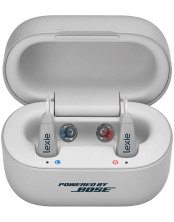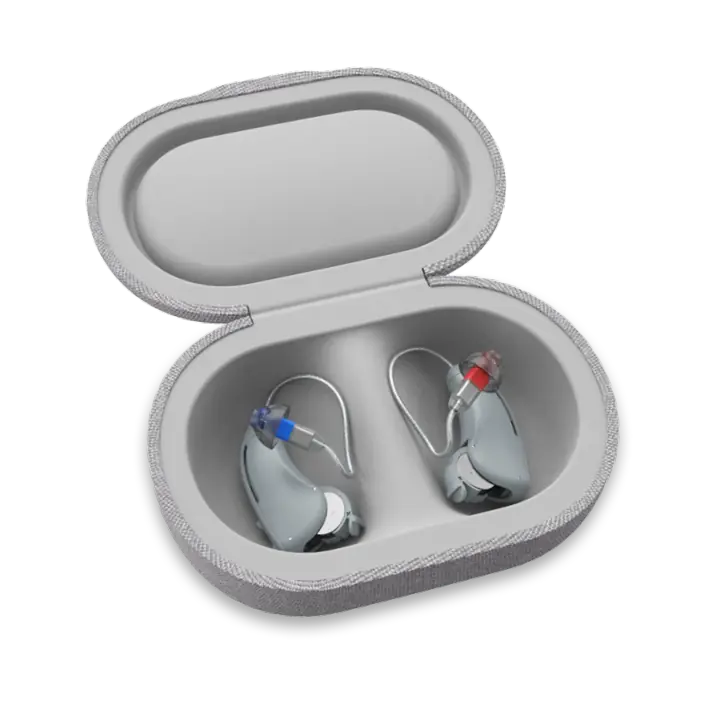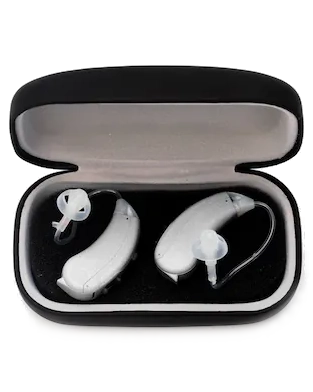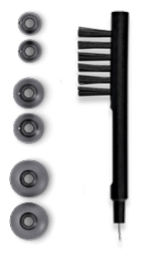Wearing Your Hearing Aids in Windy Conditions
Published: May 17, 2021
Updated: July 21, 2022
It’s wonderful to go outside and enjoy activities with family and friends in nature, and it’s also important to pursue an active lifestyle for your physical well-being. Hearing aid users are encouraged to use their hearing aids all waking hours for better listening and easier participation in a conversation. Within optimal environments hearing aids perform excellently, but often hearing aids users notice unpleasant noise in windy conditions or when outside.
How are hearing aids affected by windy conditions?
Wind can blow directly on the hearing aid microphone and cause a noisy ‘whooshing’ sound that can be very annoying and unpleasant. Windy conditions can cause very challenging listening situations for a hearing aid user, as it causes can weaken the incoming signal, making it harder to follow a conversation.
If the interference is too difficult to overcome, some people take out their hearing aids. This may, unfortunately, put the hearing aid user at risk of losing their hearing aids and they’ll struggle even more to follow the conversation.
Selecting a hearing aid to enjoy the outdoors and cope in windy conditions
Modern hearing aids have special features that aim to reduce wind and other noises in the ear to a minimum, while still enhancing important speech sounds. Special features in hearing aids to support noisy conditions include different microphone options, fast processing chips for speech clarity, and the ability of the aid to make sounds louder and softer as needed.
Hearing aids may have more than one microphone which is called directional and Omni-directional microphones. They work together automatically to optimize sound and manage noise and can be programmed to a specific environment program on a hearing aid for difficult listening circumstances, like windy situations.
As the name indicates, directional microphones pick up sounds from specific directions and allow the wearer to focus or zoom on important sounds, like speech. Omni-directional hearing aids collect sound from all directions equally, almost like “surround sound”. The wind noise management features in hearing aids help to preserve speech and secure listening comfort. Newer hearing aids can process the incoming sounds very quickly to combine microphone features, adjust the gain of specific sounds, link two hearing aids for processing, and reduce noise. They may also have physical covers over the microphones for additional protection.
The sound processing happens in milliseconds so that a hearing aid wearer can hear optimally at all times. Wind reduction processing in hearing aids can also adapt very quickly to the fluctuation and strength of the wind to reduce the noise for comfort while enhancing speech at the same time.
As with most technology, there is a variety of hearing aid styles to fit different hearing needs, lifestyles, and personalities, no matter the severity or type of hearing loss, there could be a hearing solution for everyone. Take the time to think about the type and style of hearing aid that may be best for you if you are an active person, who enjoys recreational and outdoor activities. Different styles include in-the-ear, open fit, receiver-in-the-ear, and behind-the-ear hearing aids.
What can you do to improve your hearing in windy situations?
Sound quality and ease of use have improved significantly in hearing aids. The elements of nature however have their way of making it harder to hear and wear hearing aids, despite the mentioned features and technological developments. The following solutions may support the combination of hearing aids and windy conditions.
- Wear a hat or a cap: This is an inexpensive solution that will protect you from the sun and wind whilst giving some protection to your hearing aids as well. A hat that can be pulled down will help to block out the wind, preventing it from reaching your hearing aid microphones during windy conditions.
- Invest in modern hearing aid technology: Listening effort and fatigue are reduced when hearing aids are used. Older models of hearing aids unfortunately don’t have all the noise reduction and speech enhancement features that can be effective against the wind. The newer hearing aids also have better protection against dust and moisture with special coatings inside the hearing aids and covers over the microphones.
- Accessories that prevent wind and noise from reaching your hearing aids: There are windscreens, wind covers, or hearing aid sleeves available for hearing aids. Filters or accessories can attach to the hearing aid to lessen the effect of the wind on the microphone. The hearing aid sleeve is a thin elasticated cover that you can pull over the hearing aid to block out the wind noise or to protect it from sweat or moisture during exercise.
- Do a bit of planning: It helps to look at the weather forecast when going out. Unexpected rain and wind can make any outdoor activity unpleasant and hearing aids should also be covered when it is raining by using an umbrella. You can still dance in the rain with your hearing aids, but make sure they are covered and check their moisture and dust protection rating. Your hearing aid will also come with a dehumidifier container or drying capsules. Keeping your hearing aids dry when not in use can prolong the life of your hearing aids by removing any remaining moisture or sweat from the aids while you sleep at night.
- Retention cords: These are cords that attach the hearing aids to your collar with a clip and cord. Hooks that go around the ear to keep your hearing aids safe are also available. Retention cords give you the peace of mind that your hearing aids are safe and will prevent loss and damage when you are active, outside, or exercising.
We want to explore the world with all our senses when we are active and doing activities that we enjoy. We want to see, smell, feel, and hear when running, hiking, cycling, or being outside. Hearing aids and windy conditions are not an impossible combination – you just need to be cautious.
Your hearing loss, elements of nature and windy conditions don’t have to hold you back. Keep wearing your hearing aids no matter how active you want to be. Experience every moment with all your senses and keep them sharp and alert by using your hearing aids during all active hours!






